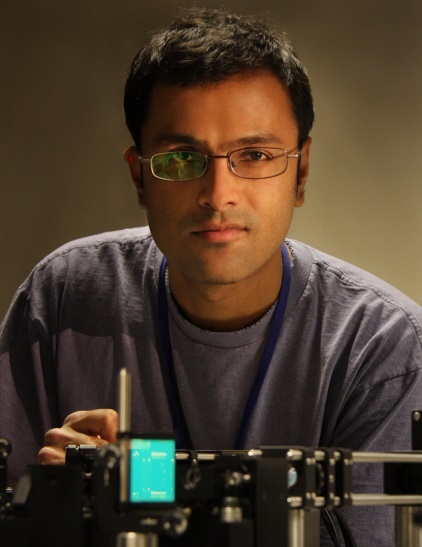
High Speed Imaging at and Beyond the Diffraction Limit
Recorded On: 05/09/2017
-
Register
- Visitor - $50
- Bronze - Free!
- Silver - Free!
- Gold - Free!
- Platinum - Free!
- Community Administrator - Free!
- ISAC Staff - Free!
- Bronze Lab Membership - Free!
- Silver Lab Membership - Free!
- Platinum Lab Membership - Free!
About the Presenter

Hari Shroff, PhD
Chief of the High Resolution Optical Imaging Laboratory
National Institute of Biomedical Imaging and Bioengineering (NIBIB)
Dr. Hari Shroff received a BSE in bioengineering from the University of Washington in 2001, and under the supervision of Dr. Jan Liphardt, completed his PhD in biophysics at the University of California at Berkeley in 2006. He spent the next three years performing postdoctoral research under the mentorship of 2014 Nobel Laureate Eric Betzig at the Howard Hughes Medical Institute's Janelia Farm Research Campus, where his research focused on development of photo-activated localization microscopy (PALM), an optical super-resolution technique. Dr. Shroff is now Chief of NIBIB's Section on High Resolution Optical Imaging laboratory, where he and his staff are developing new imaging tools for application in biological research. His current research interests include light sheet microscopy, structured illumination microscopy, and neurodevelopment.
Webinar Summary
Dr. Shroff will discuss his efforts to improve structured illumination microscopy (SIM) and light-sheet microscopy. SIM doubles the spatial resolution of light microscopy, requiring lower light intensities and acquisition times than other super-resolution techniques. He will present SIM implementations that enable resolution doubling in live volumes > 10-20x thicker than possible with conventional SIM, as well as hardware modifications that enable effectively "instant" SIM imaging at rates 10-100x faster than other SIM. New applications of instant SIM, including combination with total internal reflection (TIRF) and with adaptive optics will also be discussed.
The second half of the talk will focus on the development of inverted selective plane illumination microscopy (iSPIM), and subsequent application to the noninvasive study of neurodevelopment in nematodes. Dr. Shroff will discuss progress that quadruples the axial resolution of iSPIM by utilizing a second specimen view, thus enabling imaging with isotropic spatial resolution (dual-view iSPIM or diSPIM). Newer multi-view results with more objectives and more views, further improving spatial resolution, will also be shown. Applications of these technologies will be presented, including computational methods for untwisting worm embryos and imaging calcium flux within worm embryos.
Learning Objectives
After attending this webinar, attendees should have familiarity with new, high resolution methods for imaging live cell biology and developmental biology. There will also be an introduction to imaging neurodevelopment in nematode embryos.
Who Should Attend
Cell biologists, developmental biologists, and microscopists.
CMLE Credit: 1.0

